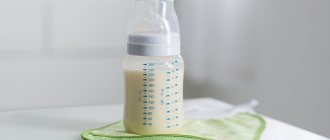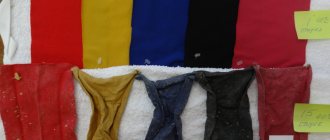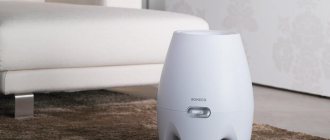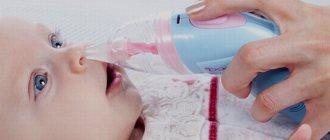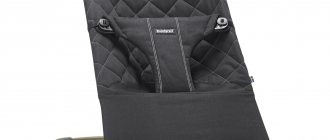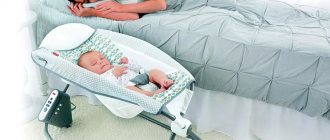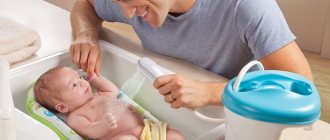The optimal nutrition for an infant is mother's milk. However, it happens that breastfeeding is not possible for one reason or another, then the baby is transferred to infant formula. Such a transition is often associated with certain difficulties, for example, the occurrence of allergic reactions in infants.
Photo: Pixabay.com
According to statistics, in our country the number of newborns suffering from various allergies increases every year. When the first symptoms appear, it is necessary to transfer the child to hypoallergenic formulas, which will provide the baby with adequate nutrition. The correct choice of such a mixture will help the baby develop correctly and ease the course of allergies. Such nutrition normalizes the digestive process, eliminates colic and gas formation, and improves the overall health of the baby.
Hypoallergenic formulas for infants come in the following types:
- Medicinal based on vegetable protein.
They are suitable for children with severe forms of allergies, are well digestible, and promote rapid weight gain. - Mixtures with whey and goat milk.
This diet is used for children with serious digestive problems: lactose intolerance, acute intestinal infections. - Product with hydrolyzed proteins.
They are prescribed to children with low weight, with severe forms of allergies, when nutrients are poorly absorbed by the child’s body. - Prophylactic mixtures.
They use special proteins that are broken down into molecules; they are more easily absorbed in the baby’s body. Used for mild forms of allergies or during remission.
This food is available in the following form:
- Powder.
This is the most common type of baby food, characterized by a long shelf life and various packaging: cans, cardboard boxes, bags. - Concentrate.
It dissolves quickly in water and is well absorbed by the child's body, but has a limited shelf life.
Formulas for infants prone to allergies are produced by different companies. However, the labeling on such products is the same: NA - low allergenic, HA - hypoallergenic. The composition is of two types: entirely (1) and partially (2) adapted.
To choose the ideal hypoallergenic formula for your baby, you need to consider the following factors:
- Age.
It is necessary to use baby food, taking into account the age requirements indicated on the product packaging. - Compound.
Before using the mixture, you should carefully study the composition so as not to provoke an allergic reaction. - Best before date.
You should always monitor the expiration dates of mixtures and try not to buy large packages, because when opened, such products have a limited shelf life. - Price.
You should not chase after an expensive advertised product. Sometimes the cheapest formula for a child turns out to be the best food that does not cause allergies.
When choosing formula milk for a baby, you should not trust the opinions of friends or advice on the Internet. If allergy symptoms occur, you should see a doctor. The pediatrician, after a thorough examination, can prescribe therapeutic or preventive nutrition for the baby.
We present the rating of hypoallergenic infant formulas 2021. The best 11 products that were selected by our experts based on user reviews and ratings.
There are contraindications, be sure to consult your doctor!
| Rating (2020) | Prices, ₽ | A country |
| 1. Similac (Abbott) Alimentum (from birth) | from 1100₽ | USA |
| 2. Bibikol Nanny Classic (from birth to 1 year) | from 1500₽ | New Zealand |
| 3. Nutrilon (Nutricia) 2 hypoallergenic (from 6 months) | from 1100₽ | Netherlands |
| 4. Friso Frisolaс Gold PEP AC Allergy (from 0 to 12 months) | from 1000₽ | Netherlands |
| 5. Alfare (Nestle) Allergy (from birth) | from 1000₽ | Netherlands |
| 6. Nutrilak (InfaPrim) Premium Peptidi MCT (from birth) | from 1000₽ | Germany, Russia |
| 7. NAN (Nestlé) 3 Supreme (from 12 months) | from 800₽ | Germany |
| 8. Nutrilon (Nutricia) Pepti Gastro (from birth) | from 900₽ | Netherlands |
| 9. NAN (Nestlé) Hypoallergenic 1 Optipro (from birth) | from 600₽ | Germany |
| 10. HiPP HA 1 Combiotic (from the first days) | from 800₽ | Germany |
| 11. Humana HA 1 (from birth) | from 700₽ | Germany |
Which hypoallergenic baby formula to choose?
Feeding babies who are allergic to cow protein requires increased attention, responsibility and financial costs from parents. When choosing the best formula for a baby, you should approach it consciously and take into account many factors. You should not ignore the pediatrician’s advice; only the attending physician can assess the extent of the disease and prescribe appropriate therapy.
- The first thing that is recommended for children who are allergic to cow's milk is a diet based on goat's milk. The BIBIKOL product has excellent taste, a balanced composition and is ideal for regular use. The only drawback of this mixture is the high price.
- If a child experiences exacerbations of allergies, then it is worth trying infant formulas based on milk protein that has undergone a hydrolysis process: Alfare Allergy, Humana HA, Nutrilon Pepti Gastro and others. Typically, such nutrition is taken in courses when allergy symptoms occur.
- Among the inexpensive but high-quality products are: Nutrilon, NAN and HiPP. They are well tolerated by the child's body and are not capable of causing allergies.
- One of the most effective and safe mixtures is Similac Alimentum, which does not contain palm oil.
We hope our rating will help you decide on the best hypoallergenic mixture.
Bon appetit baby! Thanks to All.ru in Yandex Zen. Daily updates, subscribe, we have a lot of interesting things
Daily updates, subscribe, we have a lot of interesting things
Hypoallergenic mixtures: brands
Let's go through the names of hypoallergenic formulas that are present on the baby food market today.
- “NAN” (“Nan”) is one of the most popular brands in Russia. The products are made on the basis of protein taken from whey. This minimizes the risk of atopic dermatitis and allergies. Since the amount of lactose is reduced, the product does not cause unpleasant processes in the baby's tummy. “Nan” strengthens the immune system, helps to establish the development of proper microflora in the intestines, eliminates constipation and diarrhea, and works against colic.
- “Friso” (“Friso”) is a mixture with whey and casein proteins. Helps babies gain weight better and protects against the effects of free radicals. Improves hematopoietic function, strengthens the immune system.
- "Similac" ("Similac") helps to normalize intestinal function, helps eliminate constipation, colic and other problems with the baby's tummy. Thanks to the presence of bifidobacteria in Similac, food is better absorbed by the body. Increases the protective function. Contains a complex of important fatty acids, which are essential for the development of the brain and vision.
- Nestogen (Nestozhen) from Nestlé contains synthesized protein and a whole complex of amino acids. Does not cause allergies or dermatitis. The mixture is useful for the development of the digestive system. Normalizes intestinal microflora. Contains probiotics and prebiotics. Thanks to these substances, the baby grows and develops correctly.
How to give a child a hypoallergenic formula?
In order for the transition to a hypoallergenic mixture to help cope with problems in the baby’s body, you need to give food correctly. Several features:
- You cannot suddenly switch your child to a new food. Firstly, it is unknown how the body will react to the innovation. Secondly, hypoallergenic mixtures tend to have a bitter taste compared to regular mixture. Therefore, the baby may become stubborn and begin to refuse unusual food.
- First, it is recommended to replace one of the feedings with a new food, then the second, and so on. This will allow the child to get used to the product, and parents will be able to check whether the mixture is suitable for the baby.
- It is necessary to take into account that mixtures can be therapeutic, therapeutic-prophylactic and prophylactic. The first two types are used temporarily until the allergy stops bothering you.
- When switching your baby to a hypoallergenic formula, you should not expect instant results. Changes can be noticed after at least 2 weeks. During this time, the redness of the skin will subside, and the baby’s digestion will improve.
Even a hypoallergenic mixture may not be suitable for a child. Therefore, it is better not to select products on your own, but to first ask your doctor about the options that are preferable in a particular case.
Review of popular brands
Here is a list of popular baby formulas. For ease of navigation, their names are arranged in alphabetical order.
Friso Frisolak
Price: 700 rub.
The basis of the mixture is hydrolyzed milk proteins.
It is used as a preventive nutrition for infants and children under 1 year of age.
Milk replacer is rich in microelements and other nutraceuticals necessary for the growth and development of the baby.
It has a pleasant taste, so the child will drink it with pleasure.
The main advantage compared to most formulas for allergy sufferers is good quality at an affordable price and frequent promotions for customers in large children's stores.
Friso Frisolak Gold
Price: 1160 rub.
A specialized dietary product for babies suffering from cow's milk intolerance.
Applicable from birth to 1 year.
In this diet, casein, the main allergen contained in cow's milk, is completely broken down. The absence of lactose also reduces the likelihood of allergies.
The product is enriched with vitamins, amino acids, minerals and other substances that are beneficial for the health and development of a child in the first year of life.
Humana dairy-free lactose-free
Price: 680 rub.
Soy formula is used as a dietary supplement for infants intolerant to lactose and/or proteins found in cow's milk.
Contains no sugar or gluten.
The food contains all the nutrients necessary for the full development and growth of the baby.
MD Mil Kozochka
Price: 730 rub.
Swiss dietary product for babies intolerant to cow's milk.
The composition of the mixture is rich. Nucleotides, prebiotics, vitamin-mineral premix, antioxidants, polyunsaturated fatty acids - this is not a complete list of nutraceuticals contained in food.
WHO (World Health Organization) has officially approved this breast milk substitute as a product with the right ratio of proteins and vitamins.
Similac alimentum
Price: 1170 rub.
One of the rare cases when products do not contain palm oil. It does not contain gluten or lactose.
Manufactured by Abbott, a pharmaceutical company specializing in the manufacture of medicines.
The mixture is recommended for therapeutic nutrition in cases of severe food allergies. Refers to hydrolyzed milk substitutes.
Medium chain triglycerides included in the composition improve the absorption of nutrients in the intestine. Positively affects the digestive tract.
Additional advantages are the unique composition of carbohydrates and pleasant organoleptic qualities - kids drink the mixture with pleasure.
Bellakt
Price: from 300 rub.
The portfolio of the Belarusian-made brand contains the following types of food for children with milk allergies:
- Bellakt NL (low-lactose mixture) - for children with difficulty digesting lactose due to deficiency of the lactase enzyme;
- Bellakt Soya - indicated for milk protein intolerance. Specialized nutrition prescribed by a pediatrician;
- Bellact GA - contains partially processed whey protein. Can be used as a therapeutic and prophylactic agent for allergies to milk protein.
All Bellakt brand foods contain ingredients necessary for the development of infants.
Bibikol
Price: from 1200 rub.
Nutrition for newborns based on specially prepared goat milk. An ideal alternative to traditional mixtures due to reduced allergenicity.
It has natural pleasant taste.
Babies who are fed this way eat formula with pleasure, gain weight well and do not suffer from tummy problems.
This is the best substitute for natural breast milk.
Baby fermented milk
Price: 400 rub.
Indicated for difficulty digesting regular food.
It is adapted for babies with digestive disorders and dyspeptic symptoms (colic, bloating, increased gas formation, bowel dysfunction).
However, such a mixture can provoke allergies in children with sensitivity to sugars, because she's sweet. But, as most mothers note, it is also the most delicious.
Advantages compared to other foods: affordable price and availability in most stores.
Nan hypoallergenic
Price: from 620 rub.
The best brand of baby food.
It reduces the traumatic effects of allergens on the baby’s body.
It has a rich, balanced composition. It has a beneficial effect on intellectual development, healthy teeth and bones, and vision.
Hypoallergenicity is due to partially hydrolyzed protein.
The disadvantage is the high cost.
Nestle Alfare
Price: 1200 rub.
Lactose-free formula for the treatment of children with cow's milk allergies and digestive disorders.
Whey protein is first hydrolyzed by enzymes.
Nutrition contains many useful components, including vitamins, amino acids, nucleotides, and triglycerides.
Nutrients are well absorbed due to the rich amino acid composition.
Like most other hydrolyzed mixtures, it has an unpleasant bitter taste.
Nestle Alphare Amino
Price: from 1200 rub.
A good therapeutic infant formula recommended for complicated allergies to cow protein and intolerance to other foods.
Its use is indicated in the absence of a positive effect from eating a diet with highly hydrolyzed proteins.
Milk replacer has a rich amino acid composition.
One of the advantages, in comparison with other hypoallergenic drinks, is the taste, which does not cause rejection or rejection in children.
Accepted from birth.
The disadvantage is the high price.
Nestle Alphare Allergy
Price: from 1100 rub.
Lactose-containing mixture, the composition of which is as close as possible to breast milk. It has a pleasant taste.
It is allowed to drink for a long time.
Ensures normal development, helps relieve symptoms of an allergic reaction and sensitivity.
Improves digestion.
Recommended from birth.
Nutrilak Premium soy
Price: from 500 rub.
The use of the mixture is indicated for milk protein intolerance, galactosemia and lactase deficiency.
Enriched with amino acids to increase the biological value of the food product.
At an affordable price, it has a rich composition that is beneficial for the baby’s health.
It has a pleasant taste and has a positive effect on the digestive system.
Nutrilon Hypoallergenic
Price: from 600 rub.
A complex of prebiotics and partially cleaved protein reduces the likelihood of an allergic reaction and atopic dermatitis in case of hypersensitivity to cow's milk.
It has a specific bitter taste.
It has a beneficial effect on the child’s immune system and his physical development.
Nutrilon Pepti Allergy
Price: from 1200 rub.
Dietary product for therapeutic nutrition of infants with food allergies.
Contains proteins obtained by fermentation from cow's milk. Thanks to specialized processing, the baby can receive all the necessary components contained in breast milk.
Relieves the severity of the allergic reaction.
Contains a combination of vitamins and minerals, polyunsaturated acids, prebiotics and carbohydrates, nucleotides, useful for the full development of bottle-fed children.
Suitable for long-term use.
Kids quickly get used to its specific taste and drink with pleasure.
Useful: What to eat during your period?
Key criteria when choosing a mixture
How to choose the right nutrition? To avoid mistakes, we advise you to consider the following factors:
- Age . There is a wide range of children's products on sale today. Therefore, first of all, pay attention to what age it is intended for. The necessary information can be found on the packaging. As a child grows, his nutritional needs also change. Buy something that is appropriate for his age.
- Compound . Carefully read the information about the composition so as not to buy products that can provoke an allergic reaction.
- Price . This is not the main criterion for selection. Often children react better to cheaper products and, on the contrary, there are strong allergic reactions to expensive advertised products.
- Date of manufacture. Be sure to check the expiration date. You should not buy baby food for future use. Give preference to small packages. If your baby reacts with colic, skin rashes or frequent bowel movements, you won’t have to regret purchasing a large number of unsuitable packages.
As you can see, there are quite a lot of classifications of mixtures and criteria for their selection, but you only need to choose one product. When choosing, first of all, you need to focus not on the advice of friends, advertising or reviews on the Internet, but on the recommendations of your local pediatrician.
Only a doctor can tell which formula is best for your baby. If the allergy symptoms are very serious, the baby will be prescribed a medicinal, highly hydrolyzed mixture. It is used until allergic symptoms are eliminated.
Classifications of children's hypoallergenic food
All hypoallergenic mixtures can be classified according to the age for which they are intended, by the form of release, by the intensity of the therapeutic effect and by the substance that replaces the allergen in the composition.
By age group, baby food for allergy sufferers is divided in the same way as regular milk formula:
- With a unit on the package, adapted products are produced for infants from birth to six months.
- Packages with a partially adapted composition are marked with the number “2” and are intended for babies from 6 months to one year.
Dry mixtures are varied and have a long shelf life
According to the release form, hypoallergenic baby food can be found in the form of:
- dry powder (characterized by long shelf life, a variety of packaging from small cardboard boxes to kilogram cans, requires dilution with water in accordance with the instructions, most mixtures are produced in the form of dry powder);
- concentrate for dilution (dilutes with water, dissolves more easily compared to powder, has shorter shelf life);
- a ready-to-drink drink (you just need to warm it up before drinking, does not need to be diluted with water, is convenient to take with you on the road, has a high price and a small assortment).
For children who have only a genetic predisposition to allergies, and for those in whom it has already made itself felt, the diet will be very different. It is important to consider that mixtures for allergy sufferers differ in purpose:
- preventive – suitable for healthy children who have a genetic predisposition to food allergies, either minor or the first manifestations of it, or as a transitional step from therapeutic to normal nutrition after long-term remission (within 3 months there are no signs of food intolerance);
- medicinal - such mixtures can only be prescribed by a doctor; they will help even with advanced allergies.
Requirements for the composition of mixtures
In addition to hypoallergenic digested proteins, like other breast milk substitutes, anti-allergenic food should contain the following components:
- Bifidobacteria and lactobacilli;
- Prebiotics;
- Minerals;
- Polyunsaturated fatty acids;
- Substances with enzymatic activity;
- Vegetable oils;
- Amino acids.
Depending on the manufacturer and price category, the composition will differ - the higher the price, the richer the composition.
How to properly transfer your baby to lactose-free formulas?
When a child is diagnosed with lactase deficiency, parents begin to worry and wonder how to properly switch to the recommended formula. All parents need to remember that everything depends solely on how your baby was fed previously .
The sample translation below is an example and in each individual case, consultation with the attending physician is necessary.
If the baby was fed breast milk, then the mixture must be introduced in stages - at first only 1/3 of the usual food intake and gradually increase it to a 2/3 portion. Mother's milk is not completely excluded, only its partial replacement is carried out. The baby should be transferred to the prescribed formula gradually, over 3 to 5 days.
It is not recommended to use lactose-free mixture during artificial nutrition . Due to the fact that infant formula always includes lactose in its composition and in order not to provoke dysbiosis in the baby, this mixture cannot be prescribed. In this case, the baby is gradually transferred to formulas that contain a low amount of lactose.
If the child is in the complementary feeding stage and his diet includes cereals, they should be prepared using lactose-free mixtures.
